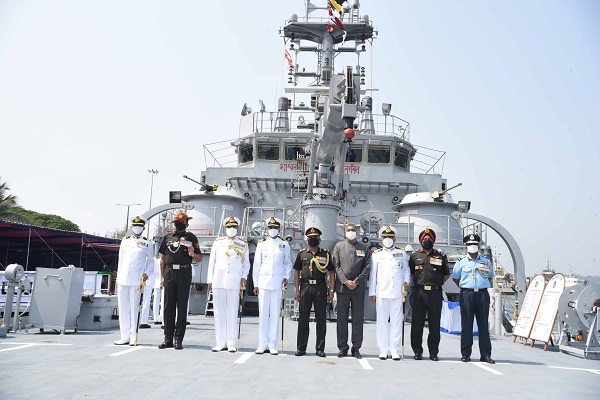Navy inducts indigenously built landing craft utility ship to enhance warfare capabilities
Total Views |
New Delhi, Mar 19: Enhancing its amphibious warfare capabilities, the Indian Navy has inducted a landing craft utility ship which will be used for a variety of activities like transporting battle tanks and other heavy weapons systems. The eighth and last of the landing craft utility (LCU) mark-IV class ship was commissioned at an event in Port Blair, the Indian Navy said.

The ship was indigenously designed and built by state-run Garden Reach Shipbuilders and Engineers Ltd (GRSE), Kolkata. The ship’s commissioning has added one more feather in the cap of the nation’s ‘Make in India’ & ‘Atmanirbhar Bharat’ program in the field of warship design and construction.
The LCU 58 would be based at Port Blair and will be deployed in a variety of roles such as Beaching, Search and Rescue, Disaster Relief, Coastal Patrol and Surveillance operations along the Andaman and Nicobar Group of Islands, Bay of Bengal and in the Indian Ocean.
Also Read: Indian Navy calls for indigenous aircrafts and submarines; places order to boost its operational capability
It will augment the Indian Navy’s mobility, reach and flexibility, furthering the Andaman and Nicobar Command’s motto, ‘Victory through Jointness’.
The LCU 58
It is an amphibious ship which can carry 160 troops, in addition to its crew. With a displacement of 900 tons, the ship is capable of carrying various types of combat vehicles such as Main Battle Tanks (MBTs), BMPs, Armoured Vehicles, trucks, etc.
Also Read: Indian Navy provides 1,000 metric tonne rice to Comoros
The ship measures 63 meters in length and is fitted with two MTA 4,000 series engines, which are capable of propelling the ship at speeds of up to 15 knots (28 kmph).
The ship is also fitted with an advanced Electronic Support Measure (ESM) suite to intercept enemy radar transmissions, an advanced Integrated Bridge System (IBS) and a sophisticated Integrated Platform Management System (IPMS), which allow single station monitoring of the ship’s navigational and machinery equipment respectively.